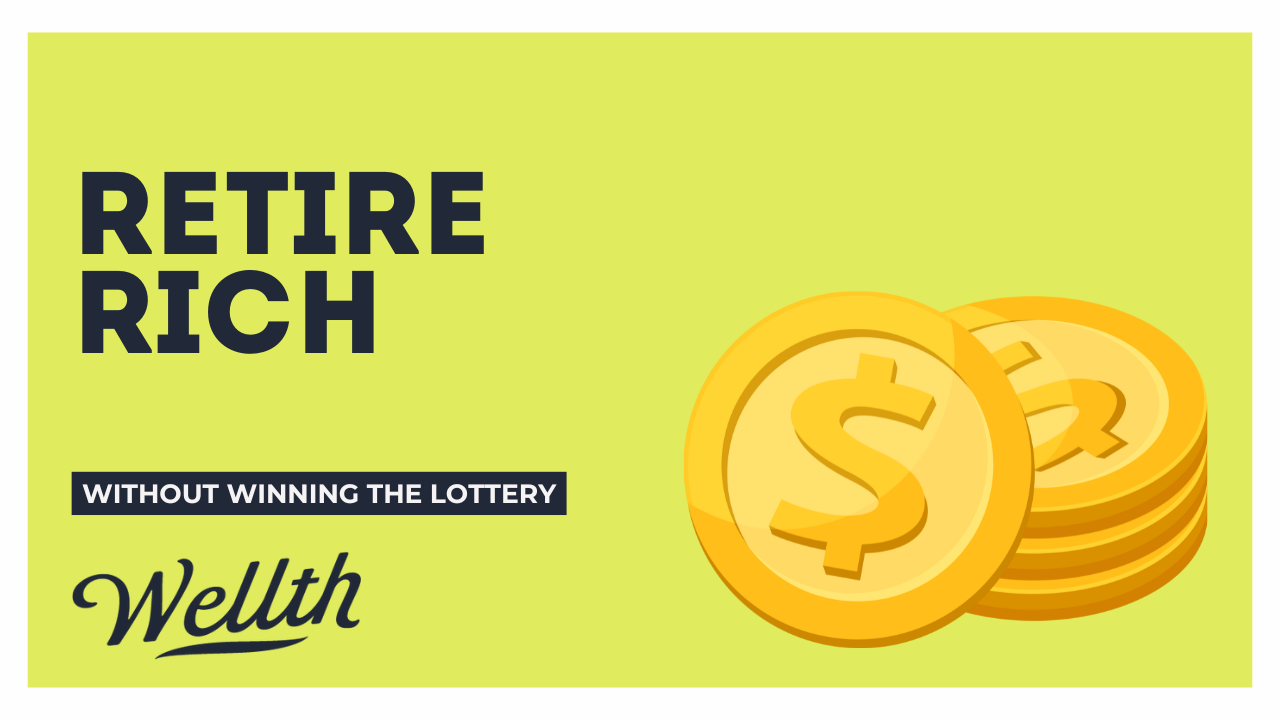Retire Rich Without Winning the Lottery
Proven Strategies to Build Wealth for Your Golden Years.
When most of us dream about a wealthy retirement, we picture striking it big in the lottery. But here’s the truth: achieving financial freedom in your golden years doesn’t require a windfall. With the right strategies, anyone can retire rich, no matter their starting point. Here are proven tips to ensure a comfortable and secure retirement.
Start Early, Stay Consistent
The earlier you begin saving for retirement, the more time your money has to grow. Compound interest — earning returns on your returns — is one of the most powerful wealth-building tools. For example, if you invest $10,000 at an average annual return of 7%, it will grow to over $76,000 in 30 years without adding another dime.
If you’re starting later in life, don’t despair. While the road may require more aggressive saving, the key is consistency. Stick to a plan, automate your savings, and avoid dipping into your retirement funds early.
Leverage Tax-Advantaged Accounts
In Canada, Registered Retirement Savings Plans (RRSPs) and Tax-Free Savings Accounts (TFSAs) are invaluable tools for building wealth:
RRSPs: Contributions to an RRSP reduce your taxable income and grow tax-deferred. While you’ll pay taxes upon withdrawal, the expectation is that you’ll be in a lower tax bracket in retirement.
TFSAs: Investments in a TFSA grow tax-free, and withdrawals are also tax-free. This flexibility makes TFSAs a great tool for both retirement and other savings goals.
Maximize contributions to these accounts annually. For 2025, the RRSP contribution limit is 18% of your earned income (up to $31,560), while the TFSA limit is $6,500. Missing out on these limits is like leaving free money on the table.
Maximize Employer Pension Contributions
Many employers offer workplace pension plans, often matching your contributions up to a certain percentage. If your employer offers such a program, take full advantage of it. This is essentially free money that can significantly boost your retirement savings.
For instance, if you earn $70,000 annually and your employer matches up to 5% of your salary, that’s $3,500 per year added to your retirement fund. Over 25 years, assuming a 6% return, this grows to nearly $200,000.
Diversify Your Investments
Building a robust retirement portfolio means balancing growth and security. Here are some guidelines based on your age and risk tolerance:
In Your 20s and 30s: Focus on growth-oriented investments like equities (stocks and ETFs). You have the time to ride out market volatility and capitalize on long-term gains.
In Your 40s and 50s: Gradually shift toward a mix of equities and fixed-income investments (bonds, GICs). This balance helps protect your portfolio from market downturns while maintaining growth potential.
In Your 60s and Beyond: Prioritize stability with a heavier allocation to fixed-income investments, dividend-paying stocks, and income funds. Aim to preserve wealth while generating steady income.
Consider low-cost index funds or ETFs to keep fees in check. Over time, high fees can erode significant portions of your returns.
Create a Spending Plan
Many retirees fall short because they overestimate how much they can safely withdraw. The 4% rule is a common guideline: withdraw 4% of your portfolio annually to avoid running out of money. For example, if you’ve saved $1 million, you can withdraw $40,000 per year while keeping your nest egg intact.
However, this rule isn’t one-size-fits-all. Work with a financial advisor to create a spending plan tailored to your needs, factoring in inflation, unexpected costs, and life expectancy.
Avoid Lifestyle Inflation
As your income grows, it’s tempting to upgrade your lifestyle. While occasional splurges are fine, consistently increasing expenses can derail your retirement goals. Instead, aim to maintain a modest lifestyle and funnel raises or bonuses into savings and investments.
Protect Your Wealth with Insurance
Proper insurance coverage safeguards your retirement plans. Consider the following:
Life Insurance: Ensures your loved ones are financially secure in your absence.
Disability Insurance: Protects your income in case of unexpected illness or injury.
Critical Illness Insurance: Provides a lump sum payout if you’re diagnosed with a serious illness, helping you cover medical costs without dipping into retirement savings.
Plan for Healthcare Costs
In retirement, healthcare often becomes a significant expense. While Canada’s public healthcare system covers many costs, it doesn’t cover everything, such as dental care, vision care, and long-term care. Investing in a health savings plan or supplemental insurance can help bridge these gaps.
Reassess Regularly
Your retirement strategy isn’t a set-it-and-forget-it plan. Revisit your goals annually to ensure you’re on track. Life changes like marriage, children, or career shifts may require adjustments. Likewise, as you approach retirement, reevaluate your investment mix and withdrawal strategy.
The Bottom Line
Retiring rich doesn’t require luck; it requires planning, discipline, and smart decision-making. By starting early, leveraging tax-advantaged accounts, diversifying investments, and keeping lifestyle inflation in check, you can achieve financial freedom and enjoy your golden years without financial stress.
Disclaimer: This analysis is for informational purposes only and does not constitute financial advice. Investors should conduct their own due diligence and consult with a financial advisor before making investment decisions.


